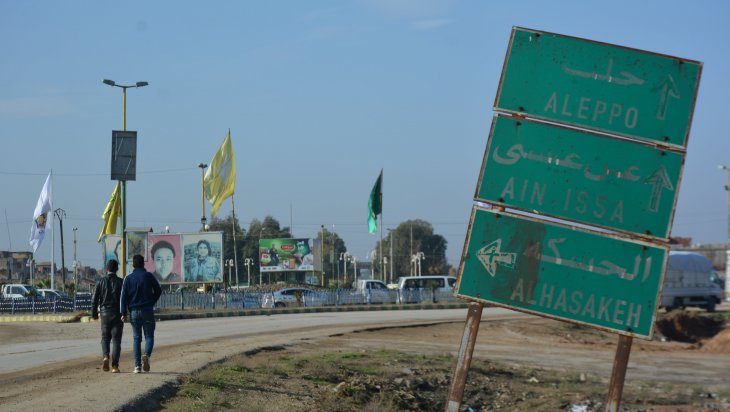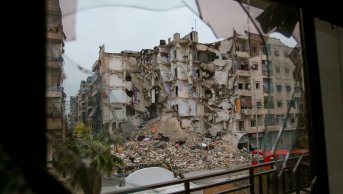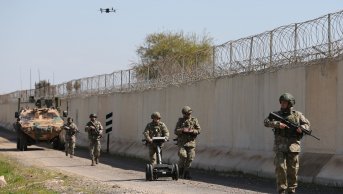The Future of Syrian Regime to the East of the Euphrates: From Rotation of Shift to Clashes

The Syrian regime never gave up on its goal of regaining control of the region east of the Euphrates, which is currently under the control of the US-backed YPG. In the beginning of the war, the regime had prioritized the western regions and governorate centers in the country over other regions and retreated from some Kurdish-majority areas. In this process, the regime favored the PYD over of the opposition to fill the void. In other words, while the regime continued to keep some strategic places under control in Qamishli and Hasakah, it withdrew from many other areas. In the following days, the PYD’s armed wing, the YPG, without any armed clashes, began moving into the areas vacated by the regime forces. The fact that the regime left some areas at the border to the PYD without any fight, underscores the possibility of a secret agreement between the parties. In the following months, the regime and the YPG openly made deals and cooperated in areas like Aleppo, Afrin and the border line. However, at the moment, with the removal of their common enemy, the parties began falling apart.
How did the shift in control begin?
When the Assad regime forces started withdrawing from some settlements along the border in July 2012, during the same month the resulting void was immediately filled by the YPG, which is the armed wing of PYD. YPG flags were hung on the walls of many government buildings in Afrin, Ayn el-Arab and Qamishli, giving the message that the regions were now controlled by the YPG. After January 2013, YPG militants that came to this region began actively fighting the Syrian opposition. In January 2014, the YPG unilaterally declared autonomy in Afrin, Ayn el-Arab and Qamishli and began directly getting military support from the USA. As a result, it enlarged the region it controlled on the pretext of fighting ISIS. Unsurprisingly, Tel Abyad and Rasulayn came under YPG control in June 2015. In other words, the YPG thus began slowly moving towards the Arab-majority areas.
Such YPG activities in the north of Syria not only fueled more mass migration towards Turkey, but also the clashes along the border began posing a threat to Turkey’s security. When Turkey voiced these concerns, the US built the Syrian Democratic Forces (SDF) in October 2015, which is mainly made up of the YPG in an attempt to legitimize the YPG with the help of Assyrian and Arabic groups incorporated in the new body. When the SDF recovered Tel Rifat from the opposition in February 2016, Turkey began firing artillery at SDF locations. From that point on, Turkey launched extensive military campaigns to root out the terrorist presence in the north of Syria, targeting particularly ISIS and the YPG/SDF. After the Peace Spring Operation that was started in October 2019, a 30-km expanse of land between Tel Abyad and Rasulayn was cleaned of any terrorist threat. In the aftermath, agreements were reached with Russia and the USA to ensure that there would be no YPG presence within 30 km of the Turkish border. When US forces left the area, Russian and regime forces began taking their place.
Regime forces now began returning to the border line left to the YPG, albeit to a smaller extent. In the 7 years since the beginning of the war, and thanks to the help of Russia, the regime forces were able to regain control of places that were critical to it, while the YPG gained a foothold in the whole of the east of Euphrates with the help of the USA. Now, in the absence of the opposition, the parties will fight on the same battlefield. In other words, the regime-YPG alliance that was once unavoidable due to the circumstances, now has the potential to turn into a rivalry.
The Crises in Ayn Issa and Qamishli Affected the Regime’s Presence to the East of the Euphrates.
Ayn Issa in the south of Tell Abyad, is one of the strongest examples of the rivalry between the regime and the YPG. The region is strategic both for the regime and the YPG. Especially, after direct intervention by Russia, the region turned into one of the centers of conflict to the east of the Euphrates. Ayn Issa is important to get the YPG’s military supplies to Ayn al-Arab which are brought through the Iraqi border. But it also allows regime forces to get from Aleppo to Qamishli. In other words, Ayn Issa provides a strategic advantage with regards to the control of the M4 road and to exert influence in the region.
Russia demanded that the YPG leave Ayn Issa to the regime forces, which the YPG refused and the YPG militants disguised as civilians protested the demand and threw stones at the regional Russian station in December 2020. Russia wanted regime forces to settle in Ayn Issa because it was only this way that Ayn Issa operations of the Syrian National Army (SNA) could be prevented. This is because, if the SNA had taken control of Ayn Issa, the regime and YPG would have lost a strategic location, which would be detrimental to the regional interests of Russia. Nevertheless, the YPG reacted strongly and rejected these Russian demands.
Another and even a bigger rift between the regime and the YPG ensued with regards to Qamishli. As the Ayn Issa crisis was unfolding, some regime members were arrested in Qamishli in February 28, 2020. On February 4, 2021, the YPG laid siege to the so-called “Security Square” military zone controlled by the regime forces and the entry and exits of regime forces were prevented. Consequently, the regime, benefiting from its control over the airport in Qamishli, air-supplied weapons and ammunition to its troops in the area. The regime thus tried to defuse the attack of the YPG that held control of roads. The YPG, in the meantime, told Russia and the regime that regime forces should leave not only Qamishli but also Hasakah and even gave a deadline for it which was January 20, 2021. When regime forces in Qamishli and Hasakah were surrounded, tensions escalated and even turned into armed conflicts at times. Russia sent 250 troops to Qamishli to defuse the tension, but clashes continued, nevertheless. One regime soldier died while four others were injured during the fight on January 23. On January 26, the entry of food and basic needs to the regime-controlled military area was stopped and family homes of regime soldiers at Hasakah, Guveyran were raided and arrests were made.
As the YPG sieges continued in Qamishli and Hasakah, regime forces laid siege to YPG-controlled Maksut and Tel Rifat and banned entries and exits to and from the region. After February 3, 2021, the sieges were mutually relieved and movement, food and fuel supplies into the regions were partially allowed. Thanks to Russian mediation, the regime and the YPG reached a deal on February 11 and agreed that the regime forces could operate in the Hasakah and Qamishli city centers under the supervision and approval of the YPG.
The Future of the Regime’s Strategy to the East of the Euphrates
Since the first years of the civil war, the YPG and the regime had to form an inevitable alliance, which in time turned into rivalry and even odd clashes. The biggest reason behind the falling out was the removal of the common enemy perception and the future of the region to the east of the Euphrates, home to the country’s national resources. Therefore, for the parties, the era of rivalry and conflicting interests has begun.
After Turkey’s Peace Spring Operation, the US withdrew its troops from the region leaving the arena to Russia. As a result, the regime forces began taking positions along the border line, even if only partially. However, the regime is still very weak compared to the YPG in the region and faces great challenges especially after the crises that have repeatedly ensued after December 2020. The situation prompted the regime to use Ayn Issa to gain the upper hand to the east of the Euphrates, but the YPG retaliated strongly and threatened the regime’s presence in Hasakah and Qamishli. For the moment, the tensions have been defused with Russian mediation, but the regime still failed to take full control of Ayn Issa. For this reason, a partial compromise was reached with the YPG due to Russian pressure even though it did not serve the interests of the regime. In the new situation, the regime is not expected to take military action against the YPG in the short term. The recent rapprochement between Russia and the YPG and the strong US-YPG relations, tip the balance in favor of the YPG. At this point, the only way for the regime to gain more control to the east of the Euphrates is by means of a new Turkish military campaign against the YPG, which becomes more likely with the increasing YPG/PKK attacks on safe zones. In other words, the regime’s strategy to the east of the Euphrates depends on Turkey’s potential campaigns in the region.










